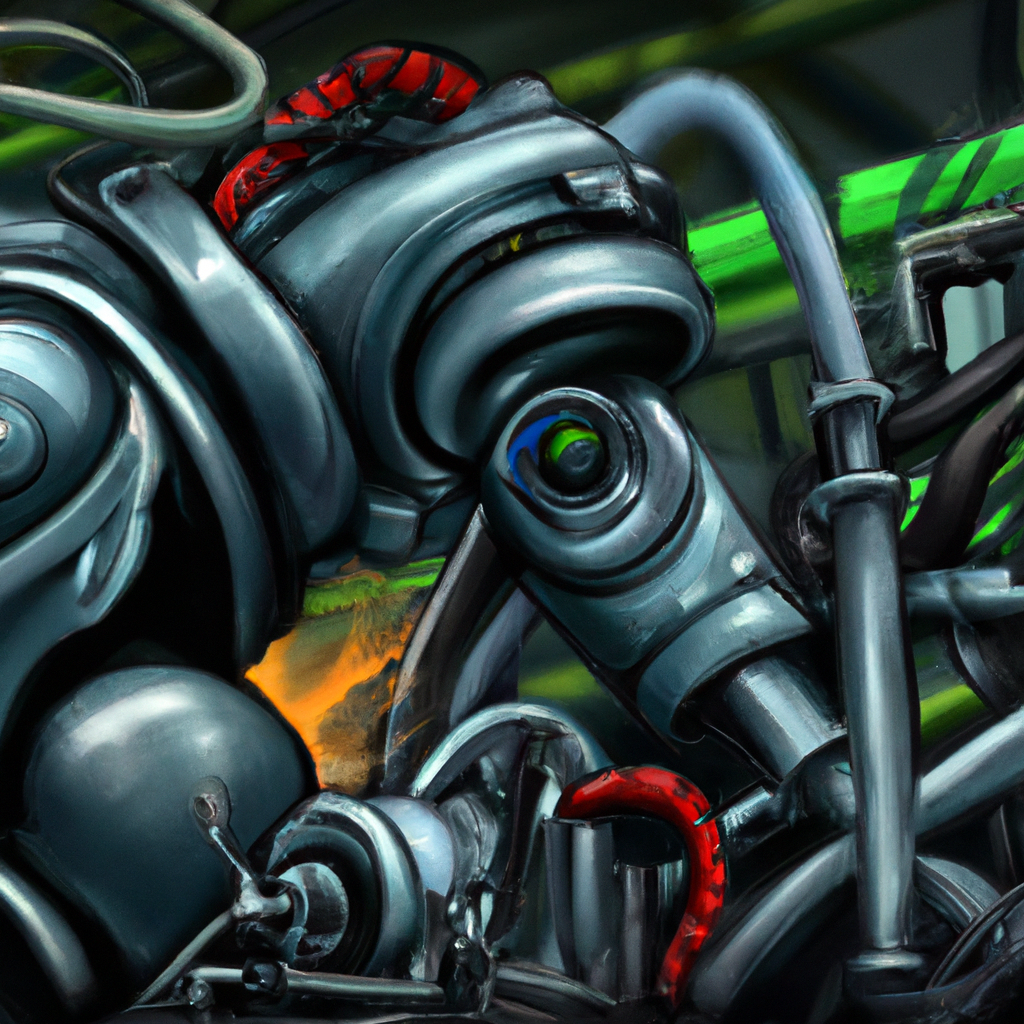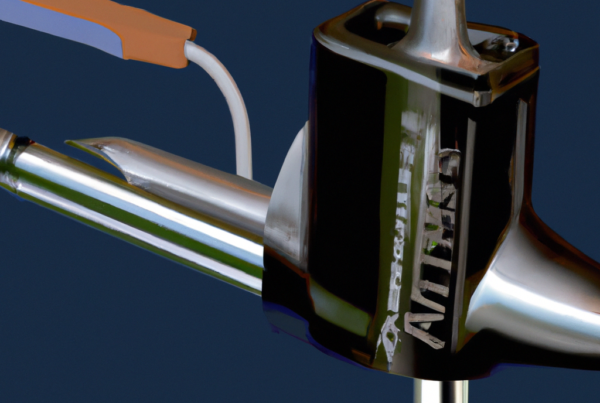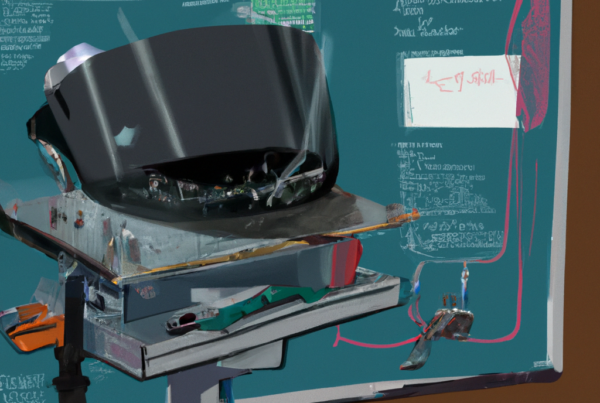Robotics has been a game changer in the world of welding. With advances in robotic technology, welding robots are capable of performing tasks with greater speed, precision, and accuracy than ever before. These robots can take on difficult welding tasks that would be hard to complete manually, including complex welds, out-of-position welds, and difficult-to-reach areas. By taking over welding tasks, robots are freeing up welders to focus on more important, value-added activities, and helping to reduce costs and increase productivity. Robots are the future of welding, and they are here to stay!

What is welding?
Welding is a fabrication process that joins materials, usually metals or thermoplastics, by using high heat to melt the parts together and allowing them to cool causing fusion. It is a key process in many manufacturing industries, and is often used in the construction of buildings, bridges, and automobiles. Welding can be done by either manually using a torch, or with a machine that uses electricity and pressure to heat the metals. The most common types of welding are arc welding, gas welding, and resistance welding.
Will robots take over welding? This is a difficult question to answer, as it depends on the type of welding and the application. For certain types of welding, robots can already be used. In mass production, robots can be programmed to weld parts with a high degree of accuracy and repeatability. However, manual welding is often required for intricate and complex welding jobs that require a skilled operator. It is unlikely that robots will ever be able to completely replace manual welding, as it requires a high level of skill and experience to be successful.
What are the types of welding?
Welding is a process of joining two or more materials together. It is a very versatile technique, and can be classified into different types based on the method used to join the materials, and the type of material being joined. Below are the 8 main types of welding:
- Shielded Metal Arc Welding (SMAW)
- Gas Metal Arc Welding (GMAW)
- Gas Tungsten Arc Welding (GTAW)
- Flux Cored Arc Welding (FCAW)
- Submerged Arc Welding (SAW)
- Arc Welding (AW)
- Oxyfuel Welding (OFW)
- Plasma Arc Welding (PAW)
In recent years, the welding industry has seen advances in robotics and automation, and this has led to increased speculation that robots will eventually take over welding. While robots are becoming increasingly capable of completing repetitive welding tasks, there are still certain tasks that require a human touch, such as welding on complex structures or inspecting welds. As such, it is unlikely that robots will completely take over welding anytime soon.
What are the advantages of welding?
Welding is a versatile manufacturing process used in a wide variety of industries to join parts together. It offers many advantages, including:
- High strength and structural integrity – Welds create strong, permanent bonds between two components, making them ideal for applications requiring strength and reliability.
- Cost-effectiveness – Welding is often cheaper than other joining processes, such as riveting or bolting.
- Flexibility – Welders can join a variety of materials, from metals to plastics, and can even be used to join dissimilar materials.
- Time savings – Welding can be completed quickly and efficiently, allowing for rapid production of parts and components.
These advantages make welding a popular choice for many applications, and have led to the development of increasingly advanced welding technologies. This brings us to the question: will robots take over welding? Robotics technology is quickly advancing, and it is likely that robots will eventually be used in welding applications. While robots may not completely take over welding, they can be used to increase productivity and accuracy, and to reduce labor costs.
Are robots currently used in welding?
Yes, robots are currently used in welding. Automated welding robots are not only used in industrial production, but also in the automotive, aerospace, and construction industries. The use of robots in welding can provide many advantages, such as increased accuracy, improved safety, and increased production rates.
Robots used in welding can be programmed to accurately control the speed, depth, and angle of welds, ensuring that welds meet exacting standards and quality requirements. They can also be programmed to be used in difficult-to-reach or hazardous locations, reducing the risk of workplace injuries caused by manual welding. Additionally, robots can weld faster and more consistently than humans, leading to increased production rates.
However, despite the advantages offered by robotic welding, there are still some aspects of welding that are difficult for robots to replicate. For example, robots are not able to recognize and adjust for changes in the welding environment, such as changes in temperature or humidity. Additionally, robots are not able to recognize and adjust for variations in the weld material or the welding technique.
Considering the current state of robotic welding technology, it is unlikely that robots will replace humans in welding anytime soon. While robots can improve accuracy and production rates, they lack the flexibility and adaptability of human welders. Therefore, it is likely that robots and humans will continue to work together in welding for the foreseeable future.
What are the advantages and disadvantages of using robots in welding?
Robots have become a common tool in welding, as they can offer precision and repeatability that is difficult for humans to achieve. While robots may offer some advantages in welding, they also have some drawbacks.
Advantages of using robots in welding include:
- Robots can work faster and more efficiently than human welders, resulting in increased production.
- Robots are more precise and consistent than humans, leading to higher quality welds.
- Robots can be programmed to perform complex welding tasks that would be difficult for humans to replicate.
Disadvantages of using robots in welding include:
- Robots are expensive to purchase and maintain, making them cost-prohibitive for some welding operations.
- Robots require complex programming and setup, which can be time-consuming and require skilled personnel.
- Robots cannot adapt to changes in their environment, making them unsuitable for welding operations that require flexibility.
Overall, robots can offer many advantages in welding operations, but they also come with some drawbacks. Therefore, it is important to consider all of the pros and cons of using robots in welding before making a decision.
What challenges do robots face in welding?
Robots in welding face a number of challenges. These include:
- Accuracy: Robots need to be programmed with precise locations and angles to ensure a good weld. This can be difficult to achieve when working with materials of different thicknesses.
- Safety: Welding robots need to be programmed to take safety precautions, such as avoiding sparks and hot surfaces.
- Cost: Robots require a substantial upfront investment, and they need to be regularly serviced to remain operational. This can add up to a significant overhead cost.
These challenges can make it difficult for robots to take over welding, but they are not insurmountable. With improved programming and better safety protocols, robots could become more viable for welding in the future.
What are the potential benefits of using robots in welding?
Robots offer many potential benefits in welding. Robot welding is safer for workers, as robots can be programmed to work in hazardous areas, minimizing the risk of exposure to dangerous fumes. Robots can also be used to weld in difficult positions or in areas that may be inaccessible to a human welder. Robots can also work more quickly and accurately than human welders, reducing the time it takes to complete a project. Additionally, robots have much higher accuracy than human welders, and can be programmed to weld with more consistent results. Finally, robots can be used to weld with a variety of materials, including aluminum and stainless steel.
Robots are more cost-effective than human welders, as they require less maintenance and downtime. Additionally, robots require less training, and can be easily programmed to perform complex tasks. Robots don’t tire, and can be programmed to work around the clock with minimal supervision. As a result, robots can be used to increase productivity and reduce costs.
In summary, robots offer numerous potential benefits in welding. They can weld in difficult positions, with higher accuracy and consistency, and can be used to weld a variety of materials. Additionally, robots are more cost-effective than human welders, and can be programmed to work around the clock with minimal supervision. With all these advantages, it’s clear that robots are quickly becoming an integral part of the welding industry.
Are robots better than humans in welding?
The use of robots for welding has been increasing over the years, and it’s clear that robots can outperform humans in many welding processes. However, it’s important to note that robots and humans are both essential in the welding industry. Here are some of the ways robots may be better than humans in welding:
- Robots are more precise and accurate than humans.
- Robots can weld for longer periods of time without getting fatigued, unlike humans.
- Robots can work in hazardous environments that may be unsafe for humans.
- Robots can weld at higher speeds than humans, which increases production.
Despite these advantages, robots cannot completely replace humans in welding. Welding is a complex process that requires a level of creativity and skill that robots cannot replicate as of yet. Humans are still needed to program robots, monitor their performance, and make any necessary adjustments.
At the end of the day, the answer to the question “Will robots take over welding?” is no. Robots and humans both have a place in the welding industry and each has advantages over the other. As technology advances, it’s likely that robots will become more prevalent in welding and humans will be needed less and less.
What are the potential risks of using robots in welding?
The potential risks of using robots in welding are:
- Welding robots may produce inconsistent welds due to human error or poor programming.
- Robots may cause more scrap or rework due to inaccurate welds or improper fit-up.
- Robots may cause safety issues due to their large size and potential for sudden movements.
- Robots may require more maintenance than traditional welders, as they are more complex.
- Robots may require more energy than traditional welders, as they require more power for their motors.
- Robots may be more expensive than traditional welders, as they require more setup and programming.
However, these risks should not be seen as a reason to avoid using robots in welding. Robots can be a great addition to any welding shop, as they can provide greater accuracy and quality of welds, as well as increased safety. The key is to ensure that the robots are properly programmed and maintained, and that the welders are properly trained in their use.
Will robots take over welding in the future?
It is possible that robots may take over welding in the future. Automated welding robots are already being used in some industries, and as technology advances, the use of robots in welding is likely to increase. Here are some of the advantages of using robots for welding:
- Robots can weld with more precision than humans.
- Robots can weld faster than humans.
- Robots are not affected by fatigue or human error.
- Robots can be programmed to weld with greater accuracy and consistency.
At the same time, there are some drawbacks to using robots for welding. For example, robots require more upfront costs than manual welding. Additionally, robots require a skilled programmer to set up and monitor the welding process. Finally, welding robots cannot match the creativity and flexibility of human welders.
Overall, robots may take over some welding tasks in the future, but it is unlikely that they will completely replace human welders. While robots may be more efficient and precise, they cannot match the creativity and flexibility of human welders.



